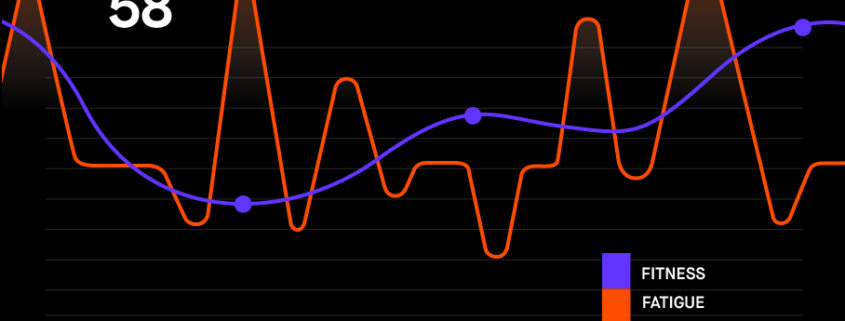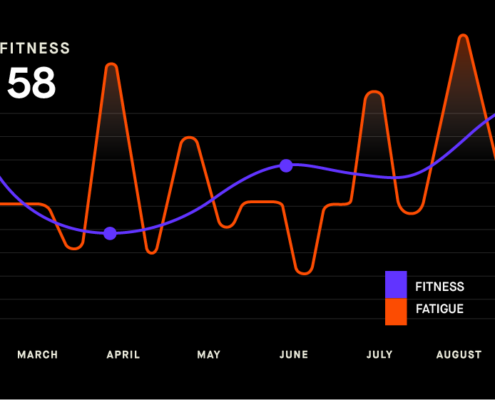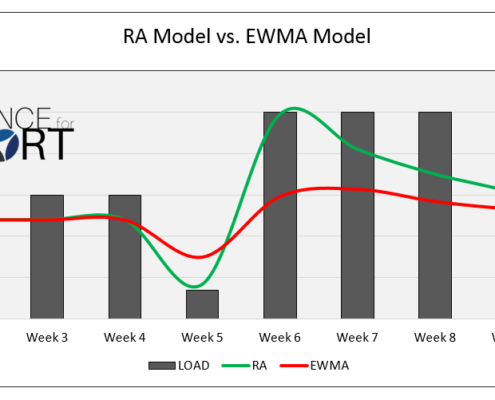The Load Management Puzzle
With the initiation of a third lock down in the UK we thought it would be a great idea to engage our readers in some motivating posts to help keep you motivated. We welcome back APA coach Konrad McKenzie with a weekly guest post.
This lockdown 3.0 I have been fortunate to gain some more knowledge from leading practitioners in strength and conditioning & sport science. A few weeks ago I took part in webinar on load management by Dario Novak. This webinar series had interesting speakers on it including professor Ales Filipcic and Matt Little who currently leads Andy Murray’s strength and conditioning programme. This series inspired me to share the information and perhaps create more conversations around monitoring using some of my own thoughts.
I will be first to admit that this was something I struggled with in the first years of coaching. Not so much the theory behind it, rather the implementation in highly dynamic environments. Usually, it is much easier to monitor this if you have large sports science departments who can meticulously monitor training readiness, volume, quality & intensity of training. As mentioned in my previous blog (Keeping athletes shoulder healthy) training volume is a large stakeholder when trying to reduce injury.
This blog will not go into all the different monitoring methods but will discuss the following:
- Why do we want to collect data on player’s health and performance?
- Painting the picture
- Do we need to look at session content?
- What we can start off by doing
- Practical implications
What and why do we want to collect data on player’s health and performance?
I am going to split this into two sections to make it more reader friendly.
What do we want to collect on player’s data health and performance?
A range of metrics can be collected in my opinion, the higher the level of the athlete the more in depth analysis needs to be. Metrics include (not an exhaustive list):
Player’s physiological and anthropometric data
- Average heart rate
- HR zones
- HR recovery
- Morning HRV Index (menstrual cycle affects HRV)
- Cardiovascular load
- Peak height velocity (when dealing with growing athletes)
- Height and weight
Other metrics include time characteristics, in the case of Tennis these are:
Time characteristics
- Start time
- Session time
- Active time
- Average rally time
- Average real time
Why do we want to collect data on player’s health and performance?
Measuring a player’s health is important for longevity and injury prevention. We are all aware that high performance sports is brutal on the body. If we think about the game of tennis for example, a high level junior player rapidly putting the brakes on when travelling at 6m/s is experiencing 3-6 times their bodyweight on each leg. Not only does this place structural and neurological stress on the body, training and competition can take a psychological toll on the human body. Additionally, those who work with growing athletes will also know the physiological stress around growth and maturation. In simpler terms we want to use data to:
- Keep players healthier
- Prevent OT & Burnout
- Aim to Reduce Injuries
Painting the picture
“It is better to measure something than nothing”
This was a quote that stood out to me from the webinar. I wanted to further add that it is also important to know what you are measuring and more importantly how you are going to use the data. Sounds obvious I know but it’s easy to get lost in a sea of data collection that will have no actionable consequences on day to day practices. It is important that we use loading data to paint the picture of the athletes we are working with. Pertinent questions from the webinar regarding data collection were:
- What kind of data/info do we use for planning?
- How do we treat and approach our players?
- How do we collect and store player’s data?
- How many different aspects of training do we work in the training process?
- What is the role of players in the training process?
- How are the players responding to load?
Do we need to look at the session content? Some food for thought
Although when they spoke about session content it wasn’t focused on youth athlete training, it is a passion point of mine and definitely created some food for thought around this area. It was highlighted that a typical academy tennis session would be very high in volume and not high enough in terms of intensity. The current training volumes may not be tolerable for a growing athlete. Also, if 60-80% of the average rally is over in 4-5 shots, are the current training volumes reflective of the game? This is an interesting question. My personal thoughts are, is there a period where we overload the volume? A period where we intensify in skill training load? So, on different training days and/or phases we emphasize volume or intensity.
A primary question from the webinar was do we know what types of load we are exposing our players to? Is this reflected in the session? Some humbling questions.
It is quite common to see a session start with high volume drilling and end with high intensity match play. This webinar was in Tennis, however I see this across the board in a lot of field and court sports. Perhaps, flipping this structure will allow for a more optimal session, makes sense from a scientific point of view. Something for the skills and strength and conditioning coaches to converse over.
What we can start off by doing
Using Minutes alone, is not a good indicator of session load, without content of the session e.g. (Volume, intensity, quality)
There are countless articles and papers by people who are much smarter than me on this topic so I am not going to dive into any monitoring tools. I will link the reader to this article which I found informative. But I wanted to highlight an idea which may be overlooked and that is categorising sessions. I have tried to do this over the years working with technical coaches to identify different types of sessions. For example, high and low intensity days. But we can go even deeper and distinguish between high intensity match play and high volume drilling. Furthermore, we could pair this with conditioning sessions which complement the type of loading from skill work. Vertical integration is popular in the domain of Rugby union and football and I am a firm believer in learning from different sports.
Practical recommendations
After hearing the webinar I wanted to offer some practical recommendations from the talk and some of my own. Firstly, I want to stress that this is by no means an easy task. Especially, if you are working alone without a team of sports scientists. I want to start off by saying first;
- Do the best you can.
- Figure out what is important to measure and how it will affect your decision making, for example, peak height and weight velocity in youth athletes.
- Build buy-in by educating coaches and athletes as to why you are collecting data.
- The higher the level of the athlete, the more in depth the analysis.
- Once you find out what you want to measure, find out the most cost effective way of doing this. There are a wide array of wearables that athletes can purchase which are fairly inexpensive. For example, Heart rate monitors for objective measurements.
- Once you have the collection method for example HR monitoring, paint the picture by working out the intensity of matches and seeing how that compares to training for planning purposes. Are we wanting to work at or below match intensity?
- Work with the technical coaches using your understanding of scientific underpinning of training and their knowledge of skill development to come up with an agreed monthly/yearly schedule.
Thanks for reading guys,
Konrad McKenzie
Strength and Conditioning coach.
Liked This Blog?
You might like other blogs on this topic from APA:
APA review of the Middlesex Students S&C conference 2014
The Dubious Rise of the Corrective Exercise ”Pseudo-Physio” Posing as a Trainer- My thoughts
as well as two recommended articles:
This article on weak Glutes during Squatting
And this one on Exercise Modifications
Do you feel that this would be a perfect time to work on the weak links that you have been avoiding? The things that you know you should be doing that you keep putting off? Would you like us to help you with movement screening and an injury prevention program? Then click on the link below and let us help you!
? TRAIN WITH APA ?
Aspiring Pro Training Support Packages
Follow me on instagram @konrad_mcken
Follow Daz on instagram @apacoachdaz
- If you’re not subscribed yet, click here to get free email updates, so we can stay in touch.
- Share this post using the buttons on the top and bottom of the post. As one of this blog’s first readers, I’m not just hoping you’ll tell your friends about it. I’m counting on it.
- Leave a comment, telling me where you’re struggling and how I can help
Since you’re here…
…we have a small favor to ask. APA aim to bring you compelling content from the world of sports science and coaching. We are devoted to making athletes fitter, faster and stronger so they can excel in sport. Please take a moment to share the articles on social media, engage the authors with questions and comments below, and link to articles when appropriate if you have a blog or participate on forums of related topics. — APA TEAM






